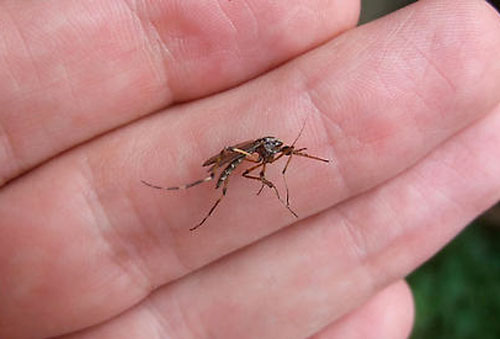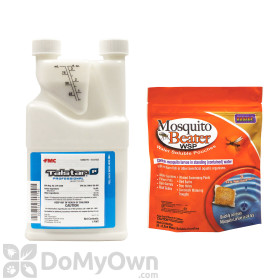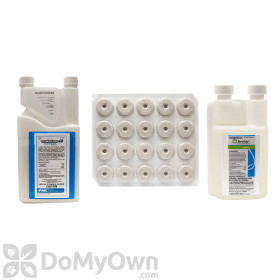What Are Gallinipper Mosquitoes?

Gallinipper mosquitoes are giant mosquitoes that have been making headlines lately with concern of their size and potential to take over. While these are very large mosquitoes, they don't differ too much from the mosquitoes we are used to. This page provides information about what these relatively huge mosquitoes look like, where you might find them, and the products you need to get them under control.
How to Get Rid of & Control Gallinipper Mosquitoes
Although these large mosquitoes look different, they are treated the same way as regular mosquitoes. The big difference is that this species of mosquito does not lay eggs in standing water; so treating any standing water on your property will not give you any control over gallinipper mosquitoes.
Read our mosquito treatment guide: How to Get Rid of Mosquitoes
About Giant Gallinipper Mosquitoes
- This breed of mosquito (Psorophora ciliata) is not invasive like Japanese beetles, but a native species that has very old origins.
- They are commonly known as gallinipper mosquitoes but are also called feathered or shaggy gallinippers
- They lay their eggs in flood-prone areas rather than standing water like most mosquitoes, and the eggs hatch when they have received efficient water supply.
- These giant mosquitoes have recently been seen last summer with abundant rainfall and tropical storm activity and have laid a large amount of eggs poised to hatch into a giant population, especially in Florida, Georgia, Alabama, and surrounding states. The eggs are stimulated by rainfall or floodwater and remain dormant until enough water accumulates so a rainy spring and early summer weather can jumpstart development.
- Usually, these mosquitoes are not considered pests as they are very rarely seen, and if they are it is most likely to be in rural areas.
Gallinipper Mosquito Identification and Behavior
- These mosquitoes are much larger than their common counterparts. While rumors may have you thinking "giant," these mosquitoes are about a half inch long, relatively large for a mosquito!
- Their large size will probably give them away, but they are black in color with yellow or white bands on thorax and proboscis (elongated biting mouthpart).
- Gallinipper bites are a bit more intense because of their larger size. Besides the more painful bite, it won't affect you any differently than a normal mosquito bite.
- They tend to feed and be active at all times throughout the day rather than the predictable dawn and dusk.
- Gallinippers tend to swarm, with multiple mosquitoes feeding on a host at once, which can be frightening.







